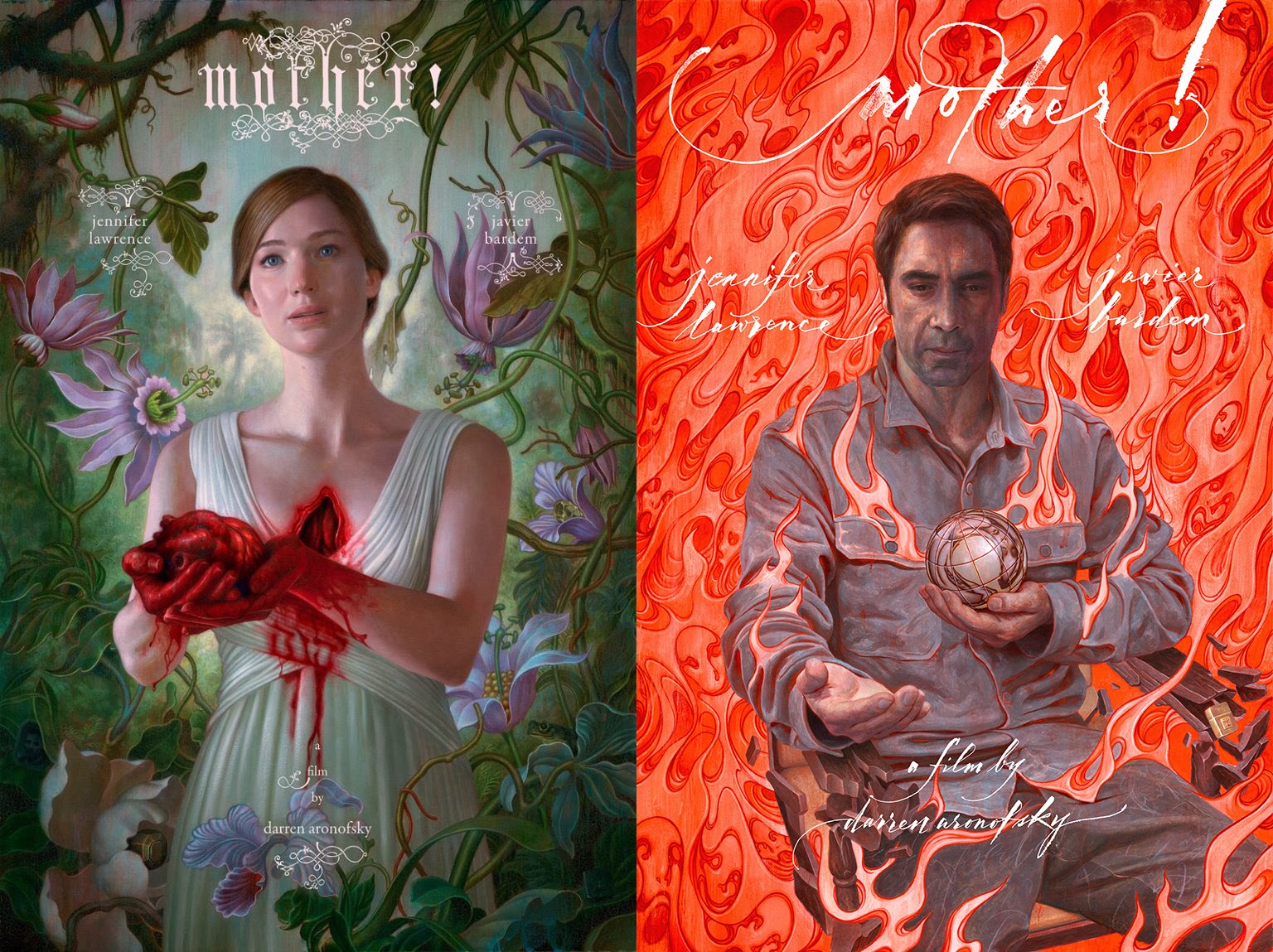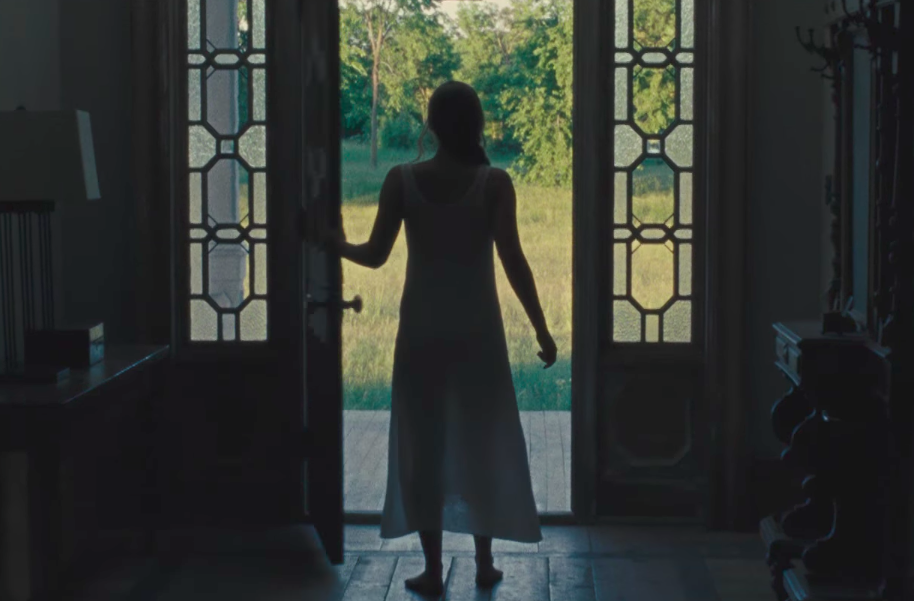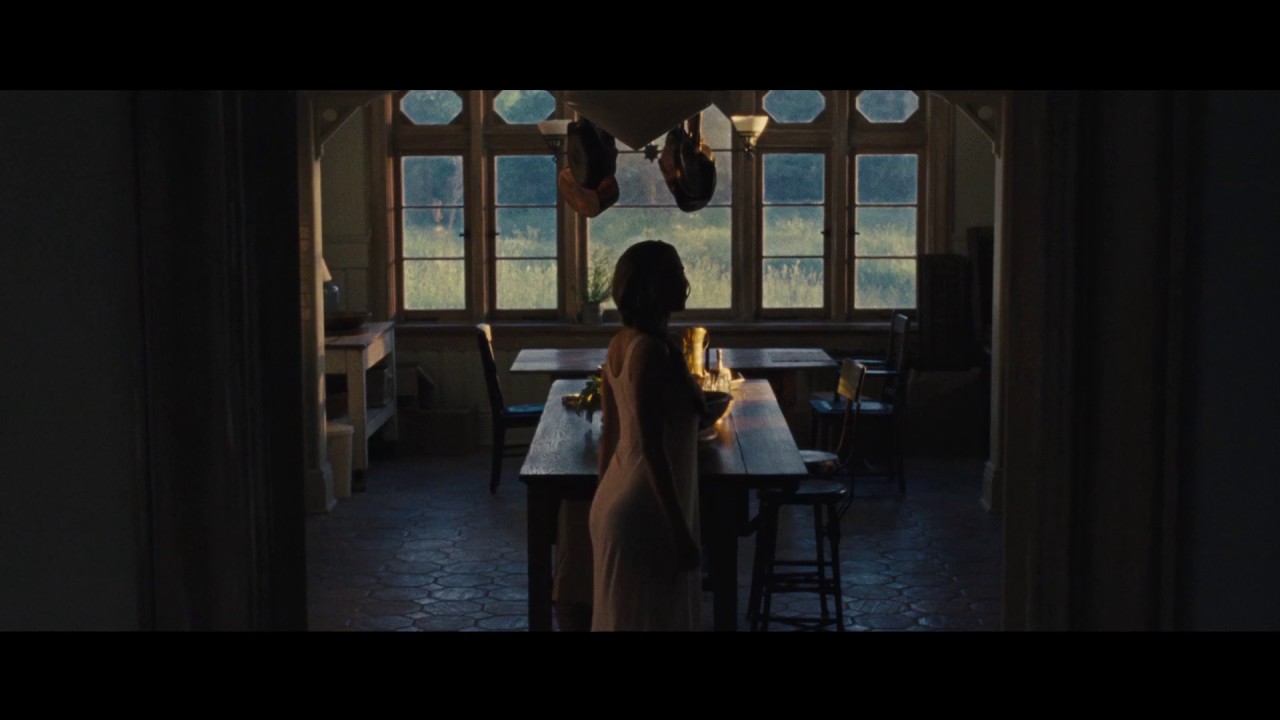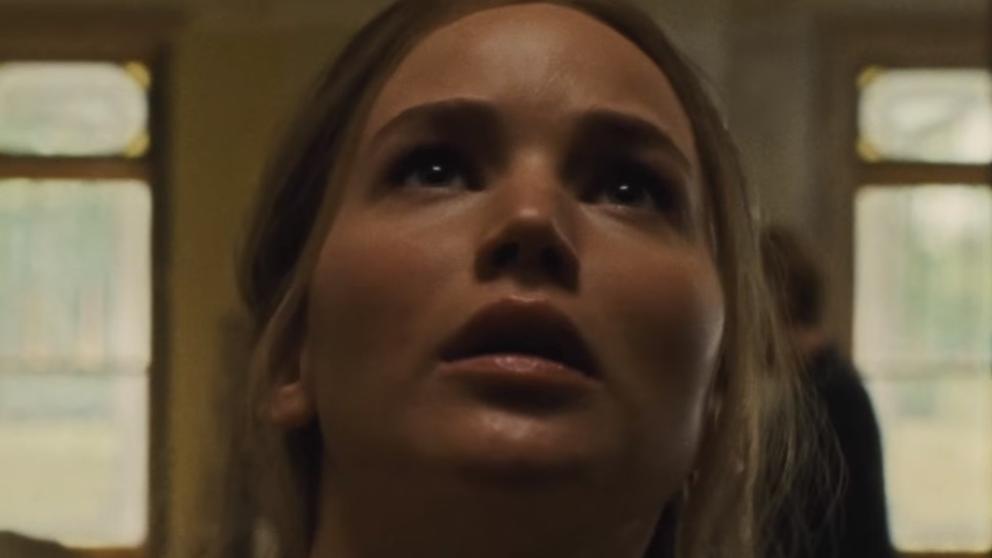“The universe (which others call the Library) is composed of an indefinite and perhaps infinite number of hexagonal galleries, with vast air shafts between, surrounded by very low railings. From any of the hexagons one can see, interminably, the upper and lower floors.”
So begins Jorge Luis Borges’ classic 1941 story The Library of Babel, which imagined a finite collection of texts assembled from the same rudimentary characters, that would nevertheless contain every book it was possible to write, every conceivable idea and its negation, and a whole lot of randomly assembled gibberish. This is where the text of Darren Aronofsky’s mother! can be found.
Among all its outraged or adoring thinkpiece responses, and the responses to those responses, and the responses to those in turn, all composed by the “imperfect Librarians” of the mother! Decoding Industrial Complex (m!DIC), the text itself remains elusive and unstable.
Aronofsky, with admirable passion and lamentable critical impulses, insists on telling us what it means, and we are immediately reminded that no one should ever listen to artists talk about their art. Authors lack such authority. Like Tobe Hooper proclaiming that The Texas Chainsaw Massacre is “about meat,” we can only respond to Aronofsky’s insistence that he made a climate-change horror: “Well, sure; that’s one theory, anyway.”
There are, of course, others.

If empirical evidence is needed for a reader-response model, mother! is just sitting there, a catalog of contradictory reactions. Aronofsky himself becomes just another reader among many. (It would be much better if he adopted the attitude of the Coens or a Kelly Reichardt, adamantly refusing to weigh in; on the other hand, the clear insufficiency of Aronofsky’s reading to encapsulate his text turns out to be instructive.)
Rarely has a contemporary text been so excoriated by its readers for ludicrous obviousness and self-evident allegory, with so little consensus on what’s so obvious and what point, exactly, its allegory is beating into the ground. Is it the reading insisted on by Aronofsky and Jennifer Lawrence, the cautionary tale about mistreatment of the Earth?
Lawrence has repeatedly mentioned that the part didn’t click until they had her character go barefoot throughout the film. (Apparently, much of the incidental sound in the House is composed of her modified voice, in case we missed the connection.) A New York Times profile mentions that mother! arose from Aronofsky’s “conversations with Susan Griffin, the author of ‘Woman and Nature,’ a 1979 feminist text … [weaving] together ideas about men and women and the roles we’ve historically been assigned: man battling nature, woman in tune with it.” (Fascinatingly, that same profile can’t help casting the real-life Lawrence as the emotive, passionate complement to her more withdrawn, analytically-minded boyfriend, as though the primacy of this reading of the film is also a decoder key for a celebrity relationship; the allegory has jumped right off the screen.)

But contra Aronofsky’s eco-feminist fable, many commentators instead find mother!‘s Biblical trappings too “on-the-nose,” insulting in their shorthand, pretentious in their broad strokes. Here, Javier Bardem’s poet (“Him”) is indeed God, Jennifer Lawrence’s wife (“Mother”) is a hybrid idealization of Earth and the Virgin Mary, and Ed Harris and Michelle Pfeiffer are the first “Man” and “Woman” (as the credits identify them), their sons are Cain and Abel, Lawrence’s child (conceived in holy violence) is The Christ, his body cannibalized by fervent parishioners. The film was originally titled “Day Six.” There are floods and plagues. A bit schematic and unsubtle? A friend retorts that subtlety is overrated. Meanwhile, the National Review sputters in breathless outrage at the heresies on display.
Another friend was surprised when these religious underpinnings were pointed out, an alien and uncompelling accounting of a film he experienced as clearly a relationship horror, even a specific apologia for the director’s self-absorption and toxic masculinity. After all, Aronofsky, once again, is directing his muse and lover, this time in a film in which her character is destroyed for his art. (The New Yorker: “Darren Aronofsky’s ‘Mother!’ Has A Muse Problem”) Bardem is even 48, like our auteur. Surely this is what mother! is about.

Still others roll their eyes: mother! is obviously, obviously about the relationship between Art, the Artist, and the world that destroys both in the process of adulation or ecstatic demolition. (Given the proliferation of thinkpieces about what the film “really means,” even after he and his star have explicitly told us, I wonder if Aronofsky himself is moving closer to this position privately.)
The point, though, is the play between meanings. mother! is excessive in every way, from its pretty hilarious exclamation point to its semantic overload. Its excess is its best, most vital aspect, preemptively mocking our quests for a totalizing reading. This is less a reflection of Aronofsky’s auteurism than something about the text itself. Like the books in Borges’ Library, mother! contains all of these meanings and none of them.
Against Explanation
With every beat of mother!’s heart, we are back in Borges’ Library, where Edgar Allen Poe and Charlotte Perkins Gilman share not just a shelf but a page, maybe a sentence. Perhaps our temptation, and the evil from which we need deliverance, is interpretation itself, the insistence on coherence in extra-textual collisions. (Pynchon: “It wasn’t our Original Sin – the latest name for that is Modern Analysis – but it happens that Subsequent Sin is harder to atone for.”)
In the Library, we are confronted by endless hexagons: “hexagonal galleries,” “hexagonal rooms [which] are a necessary form of absolute space or, at least, of our intuition of space,” “five shelves for each of the hexagon’s walls.” The hexagons have “chiefs” in Borges’ telling; they are fiefdoms. His narrator was born in one hexagon, and will die in a hexagon nearby. Hexagons are “native” or “foreign,” like soil; one travels through hexagons seeking a “catalogue of catalogues,” hexagons “exhausted” by “inquisitors” in endless excavations and marauding for meaning.
The certitude that some shelf in some hexagon held precious books and that these precious books were inaccessible, seemed almost intolerable. A blasphemous sect suggested that the searches should cease and that all men should juggle letters and symbols until they constructed, by an improbable gift of chance, these canonical books. The authorities were obliged to issue severe orders. The sect disappeared, but in my childhood I have seen old men who, for long periods of time, would hide in the latrines with some metal disks in a forbidden dice cup and feebly mimic the divine disorder.
In mother!, the hexagons have become octagons. The shape haunts and structures Aronofsky’s self-described “fever dream” – windows, rooms, the winding, walled-in confines of the text take on eight sides with a regularity that demands interpretation. (Unluckily for us, Aronofsky is once again on hand to “explain”.)
It’s more fun to consider the addition of two sides as only underscoring mother!’s excess. One imagines if the set could’ve been a dodecahedron, Aronofsky would’ve opted for that in a heartbeat, self-conscious asides about Victorian architecture aside. There is nothing in mother! that can’t be translated as an addition; the entire project is supplementary. There is no center, and therefore no reason to stop building out. Mother! is textual sprawl.
So, yes. Climate change. The Bible, neatly divided in two for the slower audiences. Art and the artist. Guilt and expiation. Transcendence and suffering. The Cerebral Masculine and Earth Mother. Poe and Perkins Gilman, Polanski and Dreyer, Von Trier and Aronofsky himself. Above all, excess. Excessive meaning, and excessive negation.

If it’s a useful shorthand to consider any work of art as tripartite – divided between author, world, and text – Aronofsky’s deftest sleight-of-hand is to map each category to the other, obscuring them individually. When we see a movie, do we attribute its meaning to authorial intent (i.e. Aronofsky’s apologia for apparently being kind of a shit in relationships, and casting his girlfriend as the Muse whose heart he steals to make a genre of God-like poetry that also serves as a hate-letter to himself)? Is meaning located in our reactions, our reactions to those reactions, others’ reactions to our reactions, our reactions to their reactions, in true Borgesian fashion, until there is nothing left to say or do? Does mother! even want us watching? Perhaps the text was stable until we arrived; perhaps the Library, rather than constituted by our queries and desires, was whole already. What if Scripture didn’t have us in mind? (It is not, nor has it ever been, “In the beginning was the Reader.”)
To be sure, none of these interpretations are final, though perhaps they are technically “self-evident.” Aronofsky’s claim to the auteurist tradition sure is, even as our readings explode outwards (or spiral down, if you’re sick of all this business by now). There’s no sense in which mother! is some kind of automatic text, or Burroughsian cut-up. John Cage is not on hand to throw the i-Ching. For all its debts to Polanski and Dreyer, no one but Darren Aronofsky could’ve, or would’ve, made this film.
And not all readings are created equal, in Borges or in mother!. Bardem doesn’t represent Donald Trump, Lawrence is not Angela Merkel, and the House is not the Trans-Pacific Partnership. Ed Harris is not a peanut allergy, Michelle Pfeiffer is not the Internet. The one guy sitting on the unbraced sink is not our complacency about aging infrastructure. The text’s open contours are still bound by their relations to the image, and our positionality.

But what Borges’ story reveals is that such things can be thoughts, argued, negated, reimagined in the simplest forms. As a collection of still images organized in sequence to allow for the illusion of perceptive wholeness — you know, as a movie — mother! is provocative enough, tenuously anchored by the leads’ performances and all the chiaroscuro lighting, formalist as a Renaissance painting, ending in headache-inducing virtuosity. But it’s as a vehicle for the proliferation of meanings and their discontents — as a text — that it triumphs. The dangled promise of unity, a unity of meaning to mirror its structural rigor, is a wink and a lie; no such thing adheres.
At the end of The Library of Babel, Borges’ narrator “suggest[s] this solution to the ancient problem”:
The Library is unlimited and cyclical. If an eternal traveler were to cross it in any direction, after centuries he would see that the same volumes were repeated in the same disorder (which, thus repeated, would be an order: the Order).
Against himself, almost despite himself, Aronofsky’s excess affirms this. After a history of our relations, after pre-Edenic unity and the Fall, after everything but hands groping, Repulsion-like, through walls, after a rush through the militarization of End Times desires, we end where we began, emptied and on fire.
“My solitude,” Borges concludes, “is gladdened by this elegant hope.” Waking in a bed untouched by the fires we’ve witnessed, a woman who is not Jennifer Lawrence rolls over and asks, “Baby?” (Yes, the final word in a film called mother! is “baby.”) Another volume for the shelf of the possible, and the inevitable. Perhaps mother!’s cruelest joke on its critics is that this literally will never end.
On the other hand, maybe this is all a bunch of bullshit. Maybe mother! really does come down to one, crucial thing, and maybe that thing is an urgent appeal to brace our sinks. That’s also possible. File it away.

